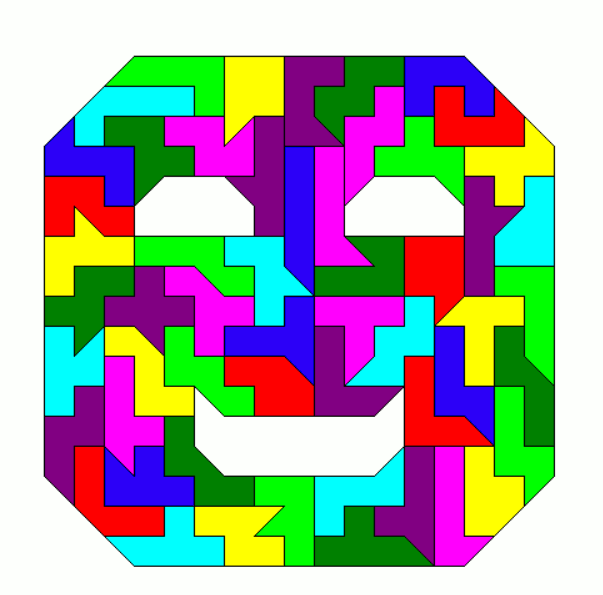

If you join n squares and one diagonal sliced square, called tan, you get as many different pieces as if you take (n+1)ominoes and remove one tan so that the pieces don't fall apart. These pieces are called n½ ominoes.
If only single cuts are allowed the set is slightly smaller and the pieces don't have interior angles of 315°. (S condition)
Otherwise you can take n-ominoes and extend these pieces by a tan. In this case the set is also slightly smaller because all pieces can't be made this way. (X condition)
Therefore we can look for constructions with the whole set or subsets, where one or both conditions are met. For n=4 the whole set of two-sided pieces is shown. Pieces which violate the S, X or both conditions are marked green, red or yellow, respectively.
Click the numbers to see some construction with the different sets.

| Two-sided Pieces | One-sided Pieces | ||||
|---|---|---|---|---|---|
| Number of Squares | Additional Property | Number of Pieces | Area | Number of Pieces | Area |
| 3 | 14 | 49 | 27 | 94.5 | |
| X | 12 | 42 | 23 | 80.5 | |
| S | 13 | 45.5 | 25 | 87.5 | |
| X & S | 11 | 38.5 | 21 | 73.5 | |
| 4 | 54 | 243 | 106 | 477 | |
| X | 44 | 198 | 88 | 396 | |
| S | 47 | 211.5 | 92 | 414 | |
| X & S | 38 | 171 | 76 | 342 | |
| 5 | 210 | 1155 | 417 | 2293.5 | |
| X | 171 | 940.5 | 339 | 1864.5 | |
| S | 175 | 962.5 | 347 | 1908.5 | |
| X & S | 143 | 786.5 | 283 | 1556.5 | |
